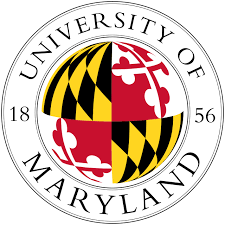As a dance educator, teaching with the rigor of inquiry-based, student-centered, collaborative learning, I recognize students as creators rather than consumers. Creators not only of artistic work, but also of the world around them, consciously shaping their reality in positive and innovative ways through the countless choices they make. I see my role in this as one of a guide, an elder, a shaman leading students on a journey of self-discovery, facilitating the realization of their full movement potential, and through this hopefully their full potential as creators and human beings.
A passionate, and compassionate, vision driven artist, with an inherent need to create and share worlds both seen and unseen, I see myself as one of many architects attempting to positively affect the trajectory of our shared cultural evolution. The creation of art paired with the nurturing and support of artistic creation, mixed with an inherently inquisitive, entrepreneurial spirit is how I intend to bring about this betterment.
However, the act of creation, the making of something new, is never a self-contained event. As matter can neither be created nor destroyed, it becomes clear that a creation is dualistic, in that it is a whole made up of parts. In the case of something intangible like dance that springs forth from the body-mind those parts are knowledge and experience. Knowledge in dance begins with lineage, which is extremely important not only contextually as a frame of reference of one’s own work, but also in the recognition that knowledge is built upon knowledge. To point out a well-worn adage, “in order to know where one is going, one must know from where one has come.”
In recognition of this, my pedagogic style is deeply informed by Laban Bartenieff Movement Studies (LBMS), primarily resulting from my work with Dr. Robin Collen, Richard Haisma, Karen Kohn Bradley, and through my certification in Laban Movement Studies. LBMS brings an attention towards observation, analysis, and synthesis of data to my work, as well as a highly effective language, the usage of which spans across the many roles that I fill as educator, scholar, choreographer, performer, and arts manager. The improvisational genius and dynamism of the Nikolais/Louis tradition, the sensitive and precise work of Irene Dowd in functional anatomy, the introspective somatic work of Irmgard Bartenieff and Bonnie Bainbridge Cohen, and the close mentorship of both Richard Haisma and Karen Kohn Bradley additionally inform my work.
My movement (technique) courses are framed by three guiding principles, that collectively work toward the goal of helping students achieve their full potential both in dance and in life: technical proficiency, performance, and community.
Technique coursework should provide a student with a foundation of technical proficiency in their ability to arrive at mastery in commanding the body. This proficiency should then be brought to life by conscious work in marrying life experience with technical skill. So often in dance, we view technique and the creative process as two separate things. However, I believe that one should work in more holistic terms. Therefore, technical ability should not be divorced from performance. Finally, the choices made through the use of this marriage must be informed by the fact that said marriage both exists within the relational context of a larger entity (community), and that these choices have an effect on that community, for better or for worse.
Generally, these classes progress from establishing a strong connection with self, a ground of awareness rooted in the affirmation of oneself, then moving towards a connecting with one or more other self-aware individuals, before concluding with group connectivity, a recognition of self as part of a larger community of diverse individuals.
Knowing that each student has their own path and their own destination, my instruction reflects this truth, in that I offer flexible structure that accommodates derivation when necessary and worthwhile.
My approach to coursework in improvisation and composition are rooted to the very essence of creation, through an intimate understanding of the creative process. Quite simply, the very act of creation suggests a choice. By making a choice we pay what in business theory is called an opportunity cost. That is the value of the foregone choice in favor of the preferred choice.
The ubiquitous nature of creation has, to some degree, left us blind to the effect that these choices have on the world around us. This idea of an opportunity cost becomes useful as we begin to think about the larger context of the work we are producing. The opportunity foregone represents the path not taken, or the potential that will never be realized. The awareness of this brings with it sensitivity in favor of evaluating choice and being able to articulate why a choice was made.
However, a balance must be struck between chaos and order, so that students feel comfortable taking risks, while embracing failure not as something to be feared or avoided but as something to learn from, to make more informed choices.
In all, I want students to leave my class with a wider lens through which to view the world, and an understanding not only of how they fit into the current structures of societal operating, but a fearlessness and an awareness of making decisions that challenge and subvert these structures or shape new ones. To this end, I encourage students to embrace and nurture their creative potential, offering guidance and support while pushing them to expect more from themselves than they might otherwise.





University of Maryland Student
Fundamentals of Modern Dance